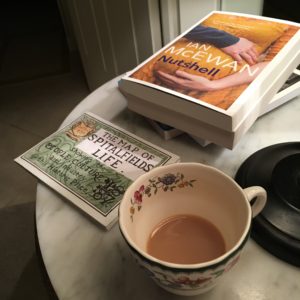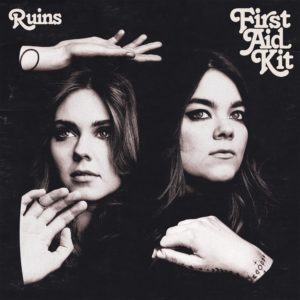
Many of the images in the Aramco book, set in Saudi Arabia, are tinged with pink.
This week we spotlighted the storytelling of the Middle East on Storyboard. Too often the coverage is of the bird’s-eye-view variety, either because of dangerous conditions or cultural differences. But these posts highlight the humanity that kind of reporting misses: the little moments that make up a life in Saudi Arabia; the evolution of angry Syrian activists into mature, professional reporters; and, finally, the “expert of the human soul,” the late Anthony Shadid.

An image from "Aramco: Above the Oil Fields."
As Saudi Arabia modernizes, an expat child of its “Little America” creates a time capsule. I loved getting the perspective of a Saudi-born writer, Jasmine Bager, on New York-based photographer Ayesha Malik’s book, Aramco: Above the Oil Fields. Bager writes: “Nothing shouts Instagrammable there. But that is precisely the point: Malik aims to collect these moments and make them into a visual collage that weaves together all of these regular moments, the kind of moments that are so familiar to all of us but not often deemed compelling enough to be photographed, especially not in a coffee table book.” She goes on: “The image of the Kingdom has shifted drastically inside and outside the country at such a rapid rate, we hardly recognize ourselves sometimes. That’s why Malik’s book is timely and more relevant than ever: We need stills like these to preserve those fleeting moments.”
The soundtrack: “Time Capsule,” by Matthew Sweet. Stop me if you’ve heard this from me before, but I’ve never understood why Sweet wasn’t a big pop star. I don’t know who does better pure pop of the pining-for-love variety (the apotheosis of it being the aching “Someone to Pull the Trigger”).
One Great Sentence
“He longed for a past as imagined as it was real.”
Anthony Shadid, “What Baghdad Has Lost,” The Washington Post, July 12, 2009. Read why we think it’s great.

Residents of the Damascus suburb of Darayya, where Enab Baladi was launched, flee in 2016.
The evolution of wartime journalists in Syria: from activists to reporters. Six years ago, in the early days of the Syrian uprising, a group of anti-government activists in a Damascus suburb decided to start their own newspaper. Back then, Lebanon-based contributor Abby Sewell writes, the journalists were all volunteers, writing about events they witnessed in their own communities: towns besieged, activists arrested and killed. Their tone was angry, recalls Kholoud Helmi, a founder and editor of the newspaper, Enab Baladi. But even under such duress, or perhaps because of it, the staff has matured and professionalized. I love that the paper pays particular attention to women’s stories, often overlooked in war reporting. Sewell writes: The fact that women made up the majority of the founders influenced the stories they chose to tell.
The soundtrack: “Grace Under Pressure,” by Elbow. This is one of those bands I don’t listen to for a long time and then, when I do, I wonder why it took so long to get back to them. Guy Garvey is a wonderful songwriter about real, adult love. This one has the best kicker. Listen carefully.
What I’m reading online: The Lost Giant of American Literature, by Kathryn Schulz. The origins of this tremendous New Yorker story are a testament to the power, and rewards, of curiosity. Schulz and her partner were driving home when they saw arrows painted by the side of the road. Instead of just trundling on their weary, hungry way home, they followed the arrows, which led to a ramshackle shed filled with bits of junk and ephemera. One was a book by Langston Hughes, signed by the author to William Kelley. That random discovery led Schulz to the story of Kelley, the lost giant American literature. A marvelous tale.
1 Son, 4 Overdoses, 6 Hours, by Katharine Q. Seelye. What a headline! Who wouldn’t read this story after seeing it? This New York Times story is another great entry in the journalism about the country’s opioid crisis. (For one of my favorites, read this Storyboard post on The Cincinnati Enquirer’s “Seven Days of Heroin.”)
Norma McCorvey vs. Jane Roe, Longreads. On the 45th anniversary of Roe v. Wade, I read this excerpt of McCorvey’s memoir about how she became Jane Roe. Here’s how she felt after realizing that she would not be able to get an abortion, that she was the “martyr,” if you like, so women after her could get safe, legal ones: “All I had, really, was my anger. My old anger at myself and my brand-new anger at these two women. In my anger, I imagined—no, I knew!—that Sarah Weddington and Linda Coffee and all their damn friends were so right and smart and socially advantaged that just by thinking about it they could arrange an abortion for themselves, or win a court case, or do anything else they damn pleased.”
 What’s on my bedside table: “Nutshell,” by Ian McEwan. One of my first stops in London was the beautiful Daunt Books on Marylebone High Street. Lovely book selection, and gorgeous building. I picked up the latest from a favorite writer. It took a little while to buy into the “gimmick” of the book, a riff on “Hamlet”: It’s told from the point of view of a fetus being carried by the Gertrude figure. But as (almost) always, McEwan’s mastery of style and character won me over.
What’s on my bedside table: “Nutshell,” by Ian McEwan. One of my first stops in London was the beautiful Daunt Books on Marylebone High Street. Lovely book selection, and gorgeous building. I picked up the latest from a favorite writer. It took a little while to buy into the “gimmick” of the book, a riff on “Hamlet”: It’s told from the point of view of a fetus being carried by the Gertrude figure. But as (almost) always, McEwan’s mastery of style and character won me over.
 What’s on my turntable: “Ruins,” by First Aid Kit. Last week, I found out that this Swedish sister band was playing a free gig at a record store that’s five minutes from my new home — two hours after they’d already come and gone. Missed music connections. This is their new album, and I love the ’70s California pop and harmonies and sense of loss that runs through much of it (and I try to overlook the occasional Stevie Nicks vibe and focus on the Emmylou Harris one).
What’s on my turntable: “Ruins,” by First Aid Kit. Last week, I found out that this Swedish sister band was playing a free gig at a record store that’s five minutes from my new home — two hours after they’d already come and gone. Missed music connections. This is their new album, and I love the ’70s California pop and harmonies and sense of loss that runs through much of it (and I try to overlook the occasional Stevie Nicks vibe and focus on the Emmylou Harris one).
If you want to chat about storytelling (or music), I’m Storyboard editor Kari Howard, and you can reach me at editor@niemanstoryboard.org. Or you can find me at @karihow on Twitter.


